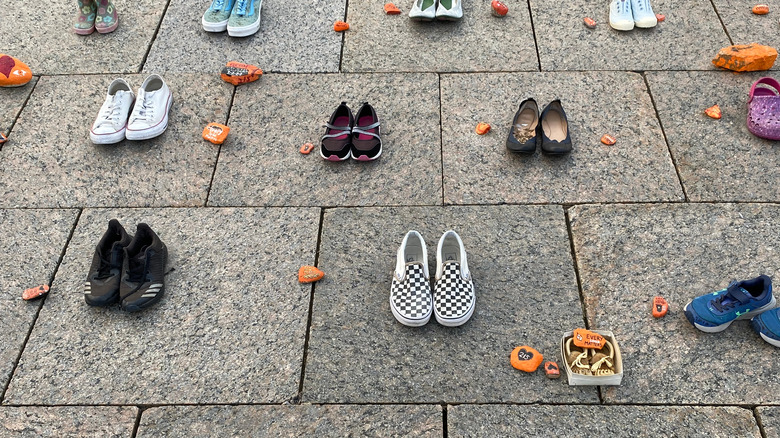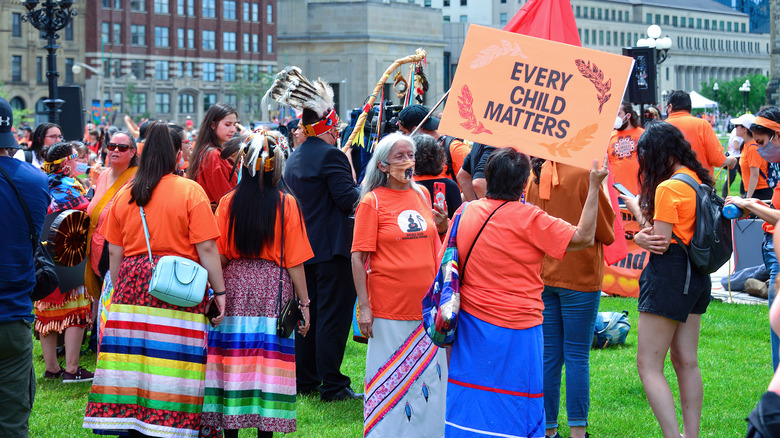The Chilling Story Behind The Bodies Found On The Grounds Of This Canadian School
Of all childhood nightmares, perhaps the most chilling premise is murder on school grounds. Generally, we view education through a lens of positivity. We equate classrooms with knowledge, safety, assurance, and socialization. However, the grim reality is that violence — including murder — is more commonplace in Western educational institutions than anyone would like to admit. Statistics released by Disaster Health and published online by the U.S. National Library of Medicine show that in the United States, 363 people died in school shootings from 1990 to 2012.
In recent years, school massacres almost always feature a child or teen shooter brandishing emotional wounds through firearms, too young to understand. But historically, it's the administrators and staff who kill students. Combine that with burying children in unmarked graves and you have the shameful truth of what happened at the Mohawk Institute in Brantford, Ontario, Canada, according to The Guardian. As of November 2021, its 500-acre grounds are the largest homicide crime scene in Canada's history.
The Mohawk Institute is Canada's oldest operating residential school, operating between 1831 and 1970. Residential schools were meant to be academic institutions that taught Indigenous children skills to assimilate into colonial culture, but according to survivors, the schools were more like slave labor camps where students were beaten and malnourished. Former students at the Mohawk Institute have emerged with harrowing tales of sexual assault, starvation, and physical and verbal abuse. Still, some of the school children did not survive to tell their story at all.
It is believed that thousands of school children were killed
Attendance at residential schools was mandatory for First Nations children who were instructed and forced to unlearn their native language and cultural norms. Earmarked as dark pages in Western academic history, the schools are as relevant as they are recent.
Sherlene Bomberry, 65, was at the Mohawk Institute for two years. She told the CBC she was separated from her siblings at the school, beaten, and at night she heard the other children crying. "That taught me that nobody cared about my feelings. Nobody cared what was going on ... I was 10. So I have to heal the little girl that was 10 in here to help her grow," Bomberry said. "... But we need the support. We need people to understand."
Vice reported there are at least 54 documented deaths of children at the Mohawk Institute Residential school so far, but according to Indian Country Today, hard data at the national level is difficult to find. Currently, there are a jaw-dropping 14,000 federal records sealed off from scrutiny. As such, the precise number of murdered Indigenous students in Canada is unclear. The search for more buried children is expected to last for years. Vice reported that there could be up to 15,000 unmarked graves spanning Canada's residential school grounds.
If you or someone you know may be the victim of child abuse, please contact the Childhelp National Child Abuse Hotline at 1-800-4-A-Child (1-800-422-4453) or contact their live chat services.

